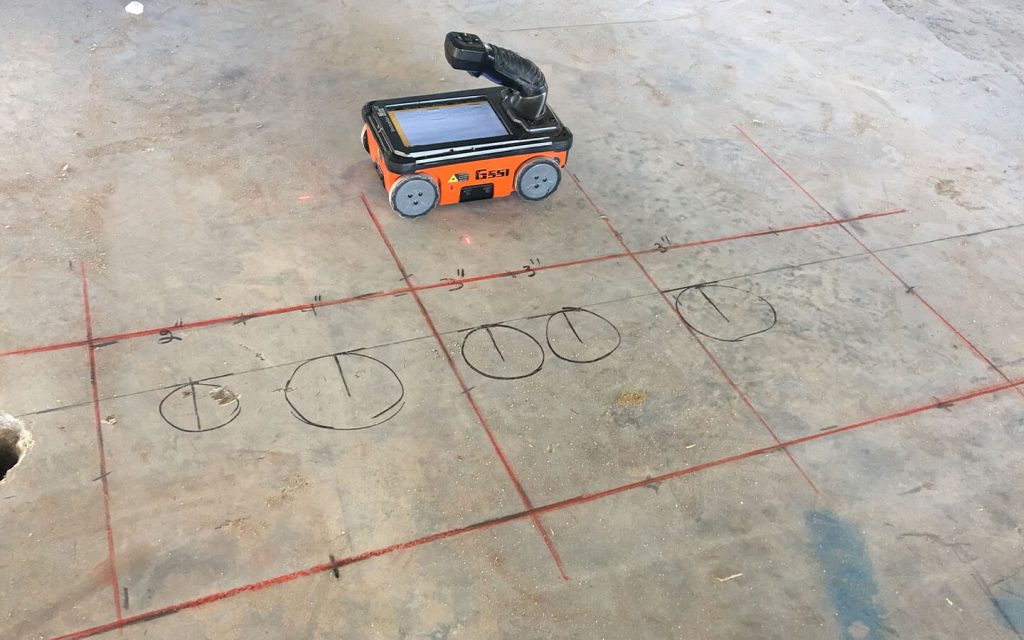Discover RainierGPR Service Areas for Trusted Concrete Scanning Solutions
Discover RainierGPR Service Areas for Trusted Concrete Scanning Solutions
Blog Article
Concrete Scanning: A Critical Step In The Direction Of Making Certain Architectural Integrity and Security
In the world of building and infrastructure upkeep, the relevance of concrete scanning can not be overemphasized. By using innovative innovation and approaches, concrete scanning offers as a pivotal device in making certain that the integrity and safety and security of structures and bridges are promoted to the highest criteria.
Relevance of Concrete Scanning
Concrete scanning plays an essential function in making sure the architectural stability and security of structures and facilities projects. By using sophisticated innovations such as ground-penetrating radar (GPR) and electromagnetic induction, specialists can non-destructively check concrete structures to find potential defects, spaces, ingrained things, and support design. This procedure makes it possible for very early discovery of anomalies that can compromise the stability of a structure, preventing expensive damages and making certain the safety and security of passengers.
Before drilling, reducing, or coring into concrete, scanning aids determine the exact places of rebar, post-tension cables, and other embedded aspects, lowering the threat of unintended hits that can lead to architectural weak points. In addition, concrete scanning help in quality control by verifying the density of concrete covers and spotting any disparities that may affect the overall toughness of the framework.
Innovation for Concrete Evaluation

Advantages of Early Discovery
Prompt discovery of architectural issues can substantially minimize dangers and make certain the long life of building tasks. By determining possible problems early on in the construction procedure, stakeholders can take positive actions to deal with problems before they rise into bigger and extra pricey problems. One of the essential advantages of very early discovery is the avoidance of architectural failings, which can present significant safety hazards and cause project hold-ups and monetary losses.
Additionally, very early discovery enables for prompt repairs and maintenance, which can help extend the life-span of the structure. By resolving concerns quickly, construction groups can avoid costly repair work and even the requirement for early substitute of architectural parts. This positive approach not just saves money and time yet also boosts the overall safety and toughness of the construction job.
In addition, very early detection can boost job preparation and decision-making by giving stakeholders with important insights right into the problem of the structure. Equipped with this info, job supervisors can make enlightened choices pertaining to building techniques, products, and timelines, bring about a lot more effective and successful job outcomes.
Making Sure Architectural Stability
Making certain the architectural security of a building and construction task is extremely important to its safety and longevity. Concrete scanning plays a crucial role in making certain architectural stability by discovering prospective concerns such as gaps, delamination, or support deterioration that can jeopardize the stability of the framework over time.
By making use of advanced scanning innovations like ground-penetrating radar (GPR) and electromagnetic induction, construction specialists can non-invasively check concrete structures to determine locations of concern below the surface. This positive strategy enables the very early discovery of weaknesses or defects, making it possible for timely fixings or support to avoid architectural failures.
Normal concrete scanning throughout various building and construction stages and throughout the life cycle of a framework can aid maintain its stability, reduce dangers, and make sure the safety read of owners. By focusing on structural stability via concrete scanning, building tasks can enhance their resilience and durability, eventually adding to link greater safety and longevity.

Stopping Critical Failures
Carrying out routine assessments, such as concrete scanning, can expose hidden defects like gaps, fractures, or corrosion that could compromise the stability of a framework. By making use of sophisticated scanning modern technologies like Ground Penetrating Radar (GPR) or Concrete X-ray, engineers can non-destructively analyze the condition of concrete and determine weak factors that require reinforcement or repair work.

Conclusion
To conclude, concrete scanning plays an essential duty in ensuring structural honesty and safety by using sophisticated innovation for early detection of potential problems. This proactive technique assists avoid vital failures and makes certain the stability of structures. It is vital to prioritize concrete assessment as a conventional technique to protect the longevity and safety and security of buildings and framework.
Concrete scanning plays a crucial role in ensuring the architectural integrity and safety of structures and facilities projects. Additionally, concrete scanning aids in quality control by validating the thickness of concrete covers and detecting any disparities that may impact the general resilience of the framework. Concrete scanning plays an important duty in ensuring structural security by discovering see post possible concerns such as voids, delamination, or reinforcement rust that can endanger the integrity of the framework over time.

In conclusion, concrete scanning plays a critical function in ensuring structural honesty and safety by utilizing innovative modern technology for very early discovery of prospective issues.
Report this page